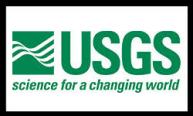Pharmaceuticals and Hormones are Rare and Low in Groundwater – USGS
 The topic of pharmaceuticals and hormones in drinking water gets people’s attention, but if that drinking water is pumped from a well, those chemicals are less likely to be present, according to a new study by the U.S. Geological Survey. The results of the national study are published in the journal Environmental Science and Technology.
The topic of pharmaceuticals and hormones in drinking water gets people’s attention, but if that drinking water is pumped from a well, those chemicals are less likely to be present, according to a new study by the U.S. Geological Survey. The results of the national study are published in the journal Environmental Science and Technology.
USGS scientists analyzed 103 pharmaceuticals and 21 hormones in samples from nearly 1,100 groundwater wells that tap drinking-water aquifers. Six percent of samples from public-supply wells and 11 percent of samples from wells used for domestic supply or other uses contained one or more pharmaceuticals or hormones. When detected, the chemicals were at low concentrations and not expected to have adverse human-health effects. Just one sample contained a pharmaceutical—hydrocortisone—at a concentration that exceeded its human-health benchmark.
This is the first large-scale, systematic study of the occurrence of hormones and pharmaceuticals in groundwater used as a drinking-water supply for an estimated 80 million people across the United States. The aquifers sampled provide about 60% of the groundwater used for drinking. Samples were collected prior to the water undergoing any type of treatment. The hormones and pharmaceuticals most frequently detected were not necessarily those most heavily used, but rather those that move through groundwater easily without adhering to soil, sediment, or rock. Samples from shallow wells, particularly those drilled into fractured crystalline rocks, were more likely to contain pharmaceuticals and hormones than samples from wells in other groundwater settings. Overall, detection frequencies and concentrations for pharmaceuticals and hormones in groundwater were lower than those reported by other studies for pharmaceuticals and hormones in surface water, and similar to or lower than those for other types of organic chemicals, such as pesticides, in groundwater.
For more information, contact Laura Bexfield (bexfield@usgs.gov).

